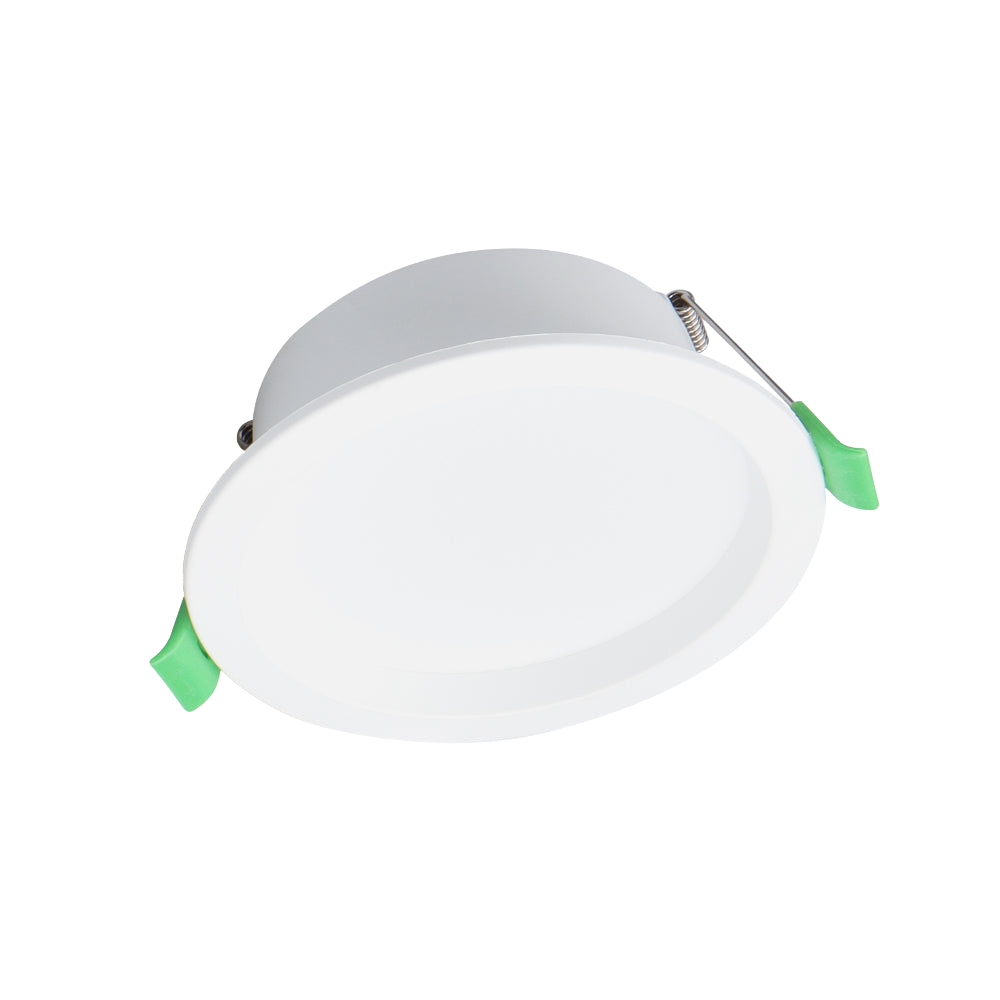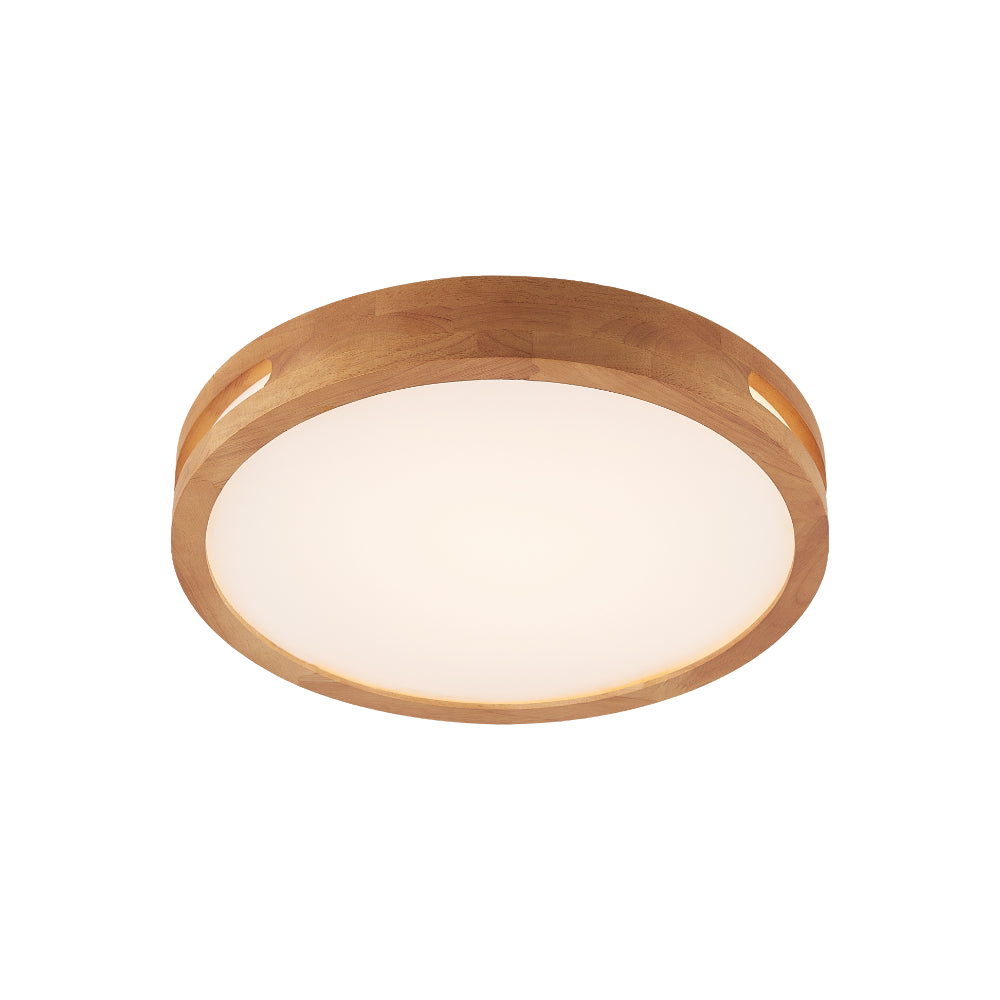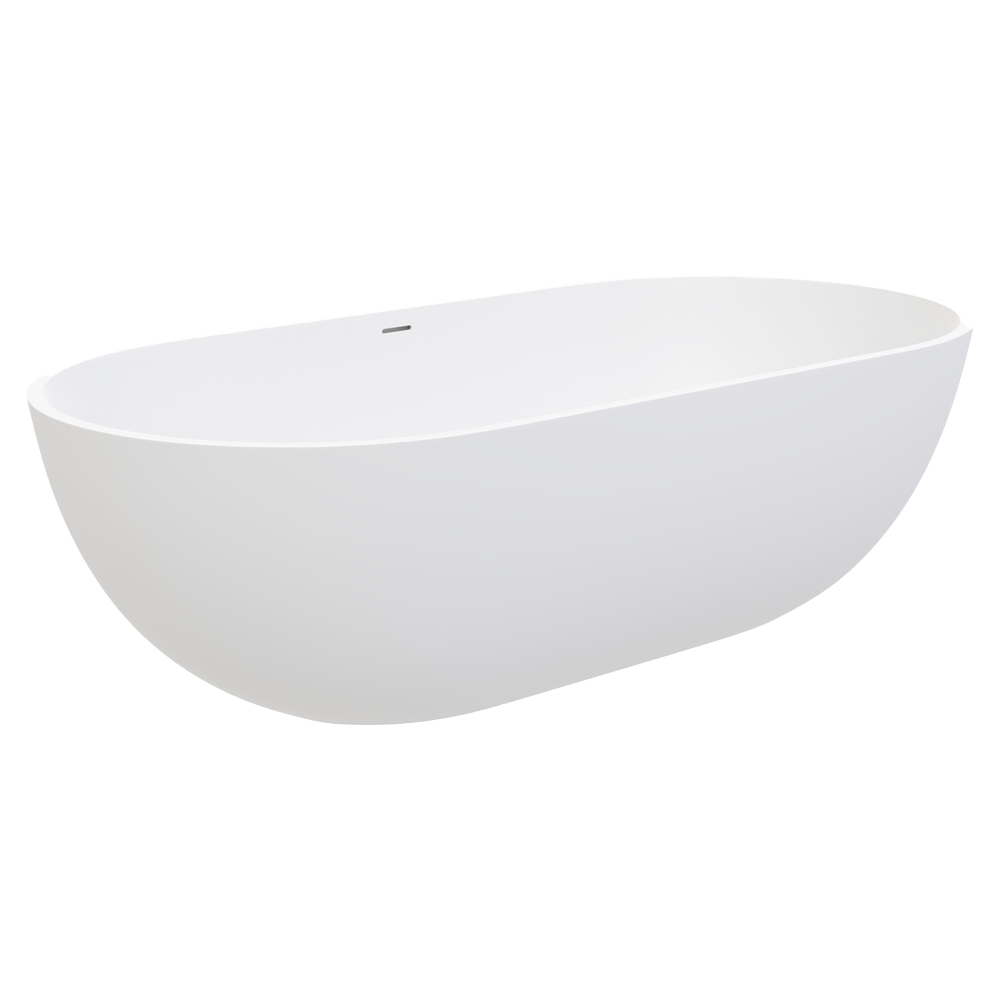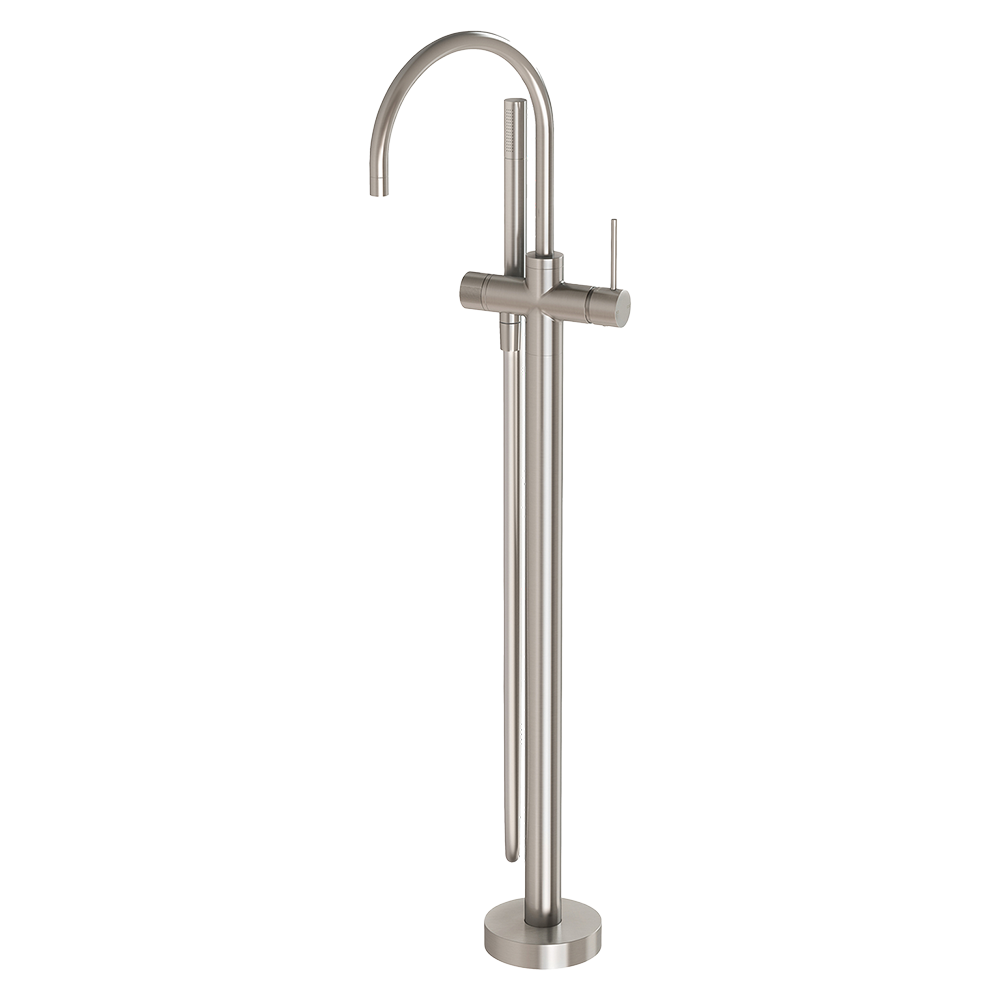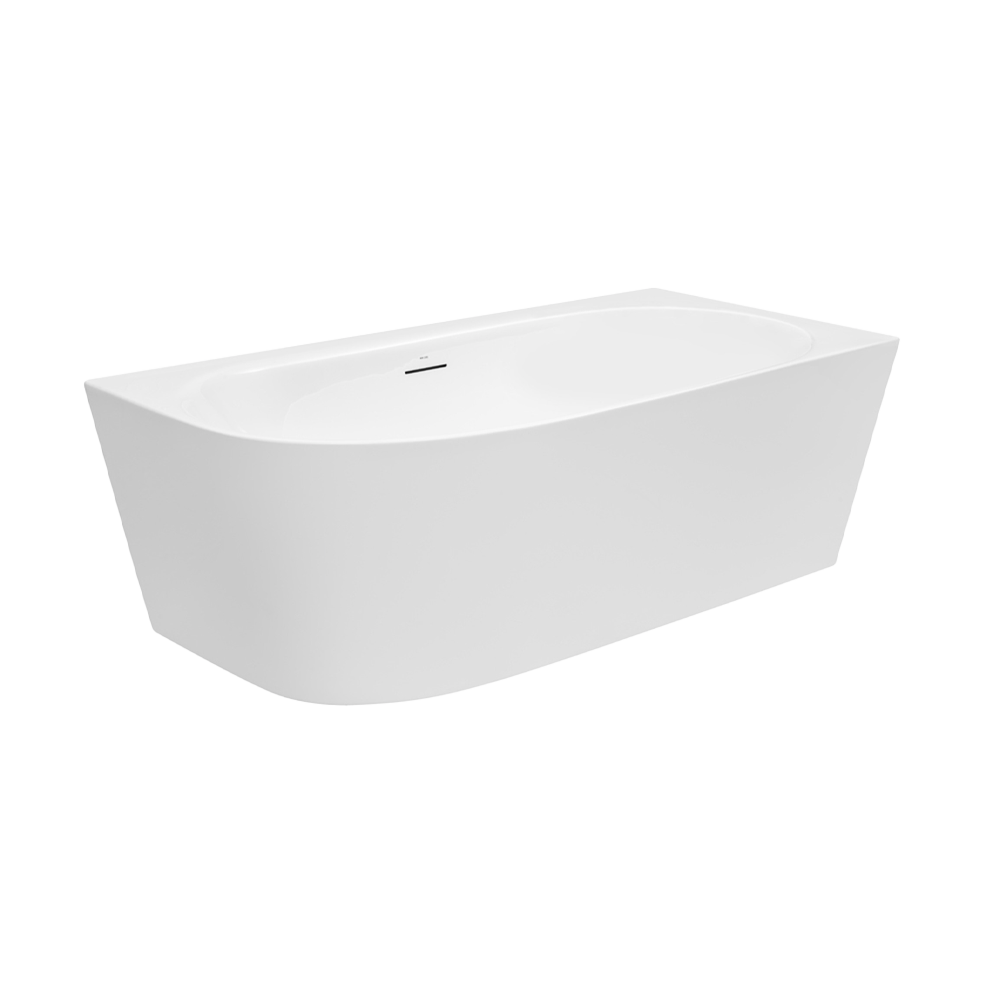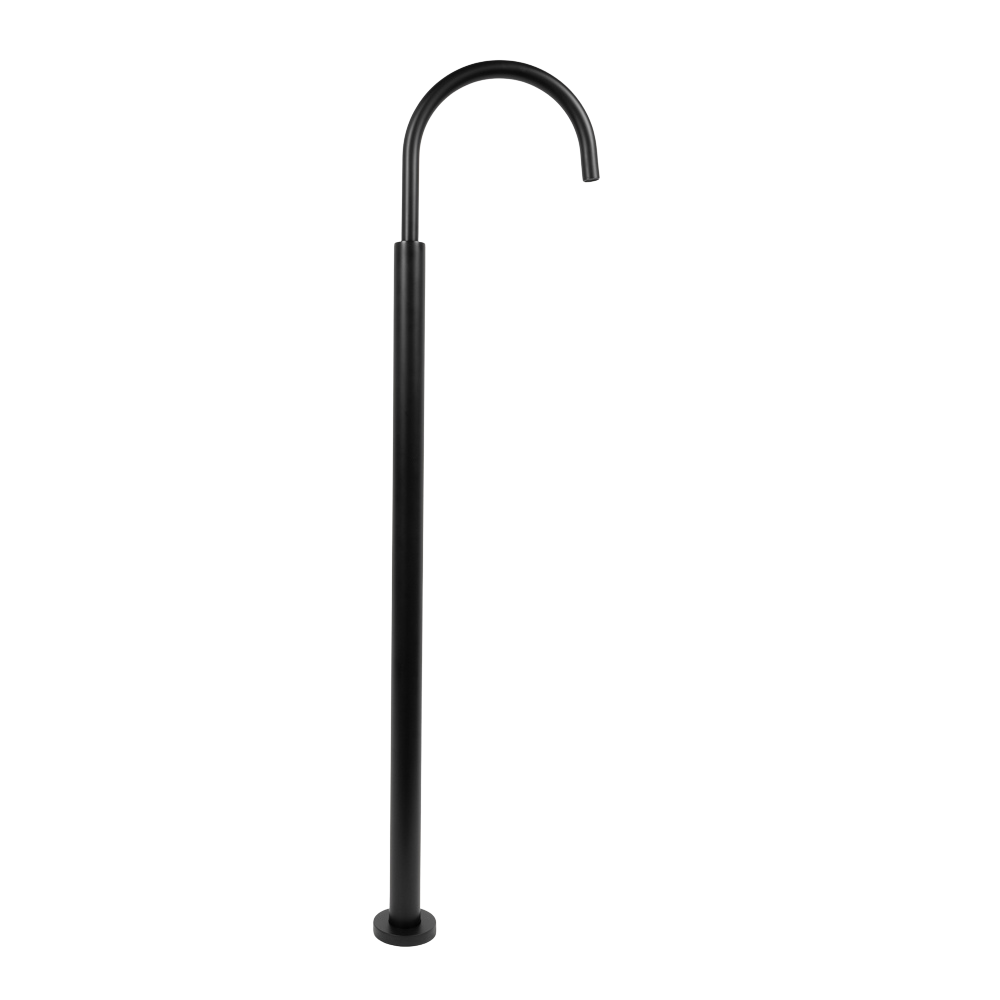How Much Does it Cost to Replace a Bathtub?
Replacing your bathtub? Here’s what it really costs to replace a bathtub in Australia, plus tips on installation, cleaning, bath size, and choosing the right style for your space.
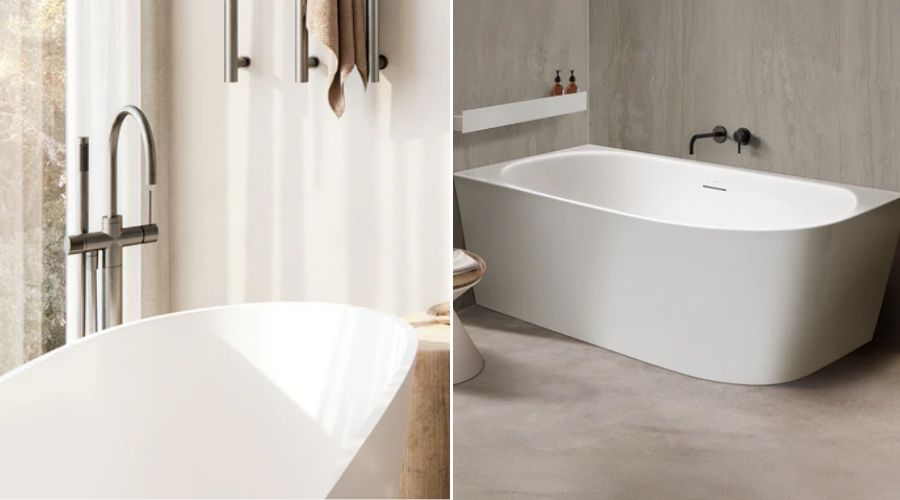
The cost to replace a bathtub in Australia typically ranges from $1,200 to $5,000 or more, depending on the type of bathtub, what needs to be removed, and how tricky the install is. That includes the bath itself, plumbing, waterproofing, and labour, but not a full bathroom reno.

This solid surface bathtub from Fienza retails at $4,099.
Fienza 1780mm Nero Solid Surface Bath Matte White
Cast stone solid surface Opulent wide wi..
Types of Bathtub Replacement Costs Compared
The biggest variable is the style and material of the new bath. Here’s a rough guide for just the new bathtub.
|
Bath Type |
Typical Price Range |
Need to Knows |
|
$300–$800 |
Good value, ideal for tiled surrounds |
|
|
$1,400–$,6000+ |
Statement look, more complex to install |
|
|
$1,300–$3,000+ |
Freestanding feel with wall efficiency |
|
|
$1,500–$4,000+ |
Space-saving in smaller rooms |
|
|
$3,000–$6,000+ |
Premium material, beautiful matte finish |
|
|
$3,500–$6,000+ |
High-end bathtub, most durable |
How Much Does Replacing a Bathtub Cost in Plumbing & Labour?
Plumbing costs can vary, ranging from $500 to $1,500, especially if:
-
You’re changing from inset to freestanding
-
The plumbing needs rerouting
-
There’s water damage or rot underneath
Installation for a new freestanding bath is usually more fiddly (and pricier) than swapping out like-for-like.
How Much Does It Cost to Remove an Old Bathtub?
Removing an old bath usually adds $300 to $600 to your project, depending on access, flooring type and whether surrounding tiles or walls need patching. Here’s what can affect the removal cost:
-
Demolition method – Acrylic and fibreglass tubs are lighter and easier to cut out. Steel or cast iron baths take more effort and may need to be broken up.
-
Access to the bathroom – Multi-storey apartments or tight hallways can increase labour and removal costs.
Tip: If your old bath is chipped, stained or wobbly, it’s usually more cost-effective to replace it than resurface or repair. Buildmat’s inset baths are a great pick if you’re working with an existing tiled surround.
What Other Costs Should You Budget for When Replacing a Bathtub?
Alongside the cost of the new bath and plumbing, there are a few extras that can catch people off guard if they’re not planned for.
1. New tapware or bath spout
Most replacement jobs also involve updating the bath tapware, especially if you’re switching from a tiled hob to a freestanding design.
-
Floor-mounted mixers start around $400
-
Wall-mounted mixers and spouts range from $200–$500+
If you’re swapping from a standard bath to a freestanding one, you’ll likely need floor-mounted plumbing and tapware.

Floor-mounted mixers look especially elegant with freestanding bathtubs!
Phoenix Phoenix Vivid Slimline Floor Mounted Bath Mixer with Hand Shower Brushed Nickel
Paying homage to the 18th-century Indust..
2. Waste and overflow fittings
Some baths come with integrated overflow; others require you to purchase it separately to match your tapware finish (chrome, nickel, matte black etc). Expect to spend around $80–$200 for quality hardware.
3. New waterproofing or tiling
If you’re replacing an inset bath and the surrounding tiles need to be redone, factor in:
- Waterproofing: $250–$400
- Tiling: $500–$1,000 depending on area and tile type
Freestanding baths like Buildmat’s solid surface models don’t require tiled hobs, which can simplify things if you’re working on a partial reno.
Looking for tiles? Explore our bathroom tile collection.
Replacing a bathtub might seem straightforward, but in most cases, it’s a job best left to a licensed plumber or builder. That’s especially true in Australia, where waterproofing and plumbing compliance are strictly regulated.

This back-to-corner freestanding bathtub from Decina is a true statement piece.
Decina 1500mm Natalia Back to Corner (Right Corner) Freestanding Bath with Overflow Gloss White
Features Back-to-corner design (Right Co..
How to Install a Bathtub
Replacing a bathtub might seem straightforward, but in most cases, it’s a job best left to a licensed plumber or builder. That’s especially true in Australia, where waterproofing and plumbing compliance are strictly regulated.
Why professional installation matters
- Legal requirements: In many states, plumbing work must be done by a licensed tradesperson, including disconnecting and reconnecting a bath.
- Waterproofing risks: If the area around your bath isn’t properly sealed, it can lead to water damage, mould and expensive repairs.
- Weight and levelling: Solid surface freestanding baths can weigh over 100kg. They need a level floor and correct support so they don’t shift or crack grout lines.
- Tiling and sealing: For inset baths, the edges need to be tiled and silicone-sealed properly to avoid leaks.
That said, if you’re a confident renovator or working with a builder and want to understand the steps, here’s a rough idea of what’s involved.
Basic steps to install a new bath
-
Remove the old bath. This includes disconnecting plumbing, removing silicone and any surrounding tiles, and safely lifting out the tub.
-
Prep the space. Check the floor is level and structurally sound. Clean the area thoroughly before installing the new unit.
-
Place and level the new bath. Whether it’s inset or freestanding, the bath needs to sit perfectly level. For freestanding baths like the Buildmat 1600mm Rounded Edge Bath, ensure there’s clearance for plumbing and cleaning access.
-
Connect the waste and overflow. Your plumber will install the correct fittings and test for leaks. Some freestanding baths require floor waste and access panels to be planned in advance.
-
Seal around the bath. Use quality silicone to seal gaps between the bath and wall or floor. Inset baths will also need tiles cut and sealed around the rim.
- Waterproof and retile (if needed). If you’ve changed bath types or had to pull up waterproofing, this step is critical. A certified waterproofer may be required depending on your state’s regulations.
When is the Right Time to Replace Your Bathtub?
If you’re not sure whether it’s time to upgrade your bathtub, there are a few signs worth paying attention to. Some are cosmetic, but others can affect the way your whole bathroom functions.
-
Cracks, chips or surface damage. Small surface issues can trap grime, feel rough, or even lead to leaks if the bath material starts to break down. If your bath looks worn or feels uneven, it’s usually not worth patching.
-
Your bath doesn’t hold heat. If the water cools down quickly, you’re probably sitting in a thin acrylic or steel tub. Newer materials like solid surface retain warmth better and feel softer to touch.
-
It moves or creaks when you step in. An unstable base can be a safety issue, and a sign that your bath is poorly supported or reaching the end of its life. Freestanding baths are built to sit securely with no flex or wobble.
It no longer suits your space or style. If you’ve updated your tiles or vanity but the bath still feels dated, replacing it can bring the whole room together. Whether you want a clean-lined freestanding tub or a compact inset model, it’s a good time to reset.

Upgrading your bathtub is the ideal time to upgrade your bath tapware too.
Alma Mira Freestanding Floor Spout Matte Black
Sleek, modern, and effortlessly chic, th..
What Else Can You Update at the Same Time?
Replacing your bath is the perfect opportunity to refresh a few other fittings, especially if you want a more cohesive look. You don’t need to renovate the whole bathroom, but swapping in matching pieces can lift the space without too much extra effort.
- Bath tapware: If you’re switching to a freestanding bath, you’ll likely need a floor-mounted mixer. If you're sticking with an inset bath, a wall-mounted mixer and spout is usually best.
- Basin and vanity: Choose a basin with a similar shape or finish to your bath for a more put-together feel especially if you're going for solid surface or stone tones.
- Toilet: A slimline, back-to-wall toilet can help modernise the room and free up a bit of visual space.
- Bathroom accessories: Small updates like matching robe hooks, towel rails or a heated towel rails can make a big difference, especially if your old ones were chrome and your new tapware is brushed brass or matte black.
If you’re already replacing the bath, adding a few of these upgrades can create a bathroom that looks and feels fresh, without doing a full renovation.
Upgrade Your Bathtub at Buildmat
Replacing your bath doesn’t need to turn into a full renovation but it’s worth doing properly. Whether you’re upgrading for comfort, looks or practicality, the right bathtub will make the space feel more considered and easier to live with long term. From freestanding statement tubs to practical inset options, you’ll find something that fits your style, space and budget.
Ready to upgrade? Shop quality bathtubs at Buildmat, and also check out bath tapware, basins, and bathroom accessories to finish the look.
More Bathroom Guides to Read
- Buying Baths: 5 Things to Consider to Help You Choose
- Best Baths for Small Bathrooms and How to Save Space
- How to Create a Spa-Like Retreat With Deep Bathtubs and Freestanding Bath Taps
FAQs
How many litres of water can a bathtub hold?
Most bathtubs hold between 130 and 220 litres, depending on size and shape. A 1500mm freestanding bath usually holds around 180L. A larger 1700mm or 1800mm bath can hold 200L+. Always check the product specs if you’re concerned about water usage or floor loading.
How do you clean a bathtub properly?
It depends on the material. For solid surface or stone composite use a soft cloth and mild bathroom cleaner. Avoid abrasives. For tougher marks, use cream cleanser or a bicarb paste. For acrylic, stick to non-abrasive cleaners like dish soap and a sponge. Avoid harsh chemicals or scouring pads – they can scratch. Rinse well and dry after each use to prevent soap scum and water spots.
Do freestanding baths need to be fixed to the floor?
Some freestanding baths do, especially lighter acrylic models. Heavier solid surface tubs like Buildmat’s are often self-weighted but can include optional fixing kits. Always check the installation instructions and speak to your plumber.
Do I need council approval to replace a bathtub in Australia?
Usually not, but you’ll need a licensed plumber, and in some cases, a waterproofing certificate. If you’re moving the bath to a new location or changing plumbing layout, it’s worth double-checking with your local council or certifier.























































































































































































































































